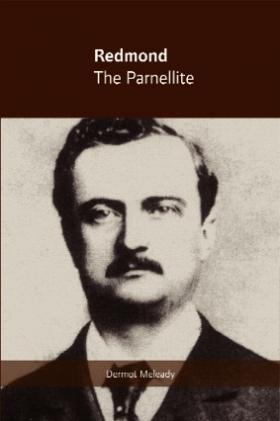Redmond the Parnellite
Published in 18th-19th Century Social Perspectives, 18th–19th - Century History, General, Issue 5 (Sep/Oct 2008), Parnell & his Party, Reviews, Volume 16 Redmond the Parnellite
Redmond the Parnellite
Dermot Meleady
(Cork University Press, €43.20)
ISBN 9781859184233
In the tumult of 1916 and the War of Independence, it is easy to forget that an agreement had already been made to give Ireland autonomy over its own affairs. The role played by John Redmond, leader of the Irish Parliamentary Party (IPP) and beacon for constitutional nationalism, has largely been eclipsed by the events that followed. Meleady’s book—the first part of a two-volume study of Redmond’s life—aims to redress the balance and takes the story up to 1900. It details his family background, his earlier years and his bright beginnings in the IPP. It outlines the part he played in the land struggles and Home Rule bills of the 1880s, and his struggles as leader of the party in the 1890s.
Redmond worked tirelessly to generate support for the IPP, and the book describes his relationship with the Liberals and his travels to America and Australia to raise funds for the party. The epilogue gives a précis of the last eighteen years of his life (a preview of what’s to come?).
Meleady admits that there are some gaps in his evidence, particularly Redmond’s early years and Redmondism in the 1890s. The book makes impressive use, however, of primary material: correspondence and parliamentary speeches from Redmond himself, songs, poems, newspaper reports and photographs. Meleady was far less reliant on secondary sources, as is evidenced in the bibliography. Scholars he does draw from include Bew, Conor Cruise O’Brien and F. S. L. Lyons.
Redmond is portrayed as the quintessential parliamentarian, a loyal foot-soldier of constitutional nationalism. He is part of the tradition of well-to-do Catholic parliamentarianism that later gave rise to the Fine Gael party. He remained steadfast in the face of opposition, but he struggled to remain loyal to Parnell during the Katherine O’Shea affair. The clue to Redmond’s true feelings and to his status is to be found in the title of the book. Redmond is still being defined in terms of his relationship with Parnell. He is portrayed very much as a statesman in waiting. For example, during the 1880s he was far from the centre of his party’s activities.
As a politician, Redmond struggled to step out from the shadows not only of flamboyant republicans but of titans within his own party, such as O’Brien and Biggar. Yet the book also points to Redmond’s skill as an orator and his ability to lead the IPP through testing times. Redmond receives generous mention in recent books on twentieth-century Ireland. Brian Girvin gives a good insight into his later years in From Union to Union (2002). Alvin Jackson in Home Rule, 1800–2000 (2003) describes him as sonorous. Tim Pat Coogan in Ireland in the twentieth century (2003) attests to the popularity of the IPP in the early 1900s. Richard English places him firmly in the nationalist tradition in Irish freedom: a history of Irish nationalism (2007).
Aside from a few biographies from family members written shortly after his death, there is no recent literature dealing solely with Redmond, so a biography is long overdue. Redmond the Parnellite is stronger on facts than on analysis, however. It does put Redmond in the broader context of the Home Rule movement and of his time, but little attention is paid to the impact he made during his lifetime or to the legacy he has left. If such an analysis is not made in the second volume, Redmond will continue to remain in the shadows.
Derbhile Dromey is a freelance journalist and UCC history graduate based in Waterford.
















